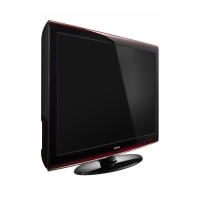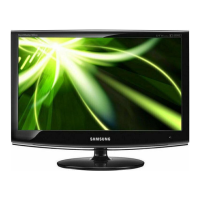Do you have a question about the Samsung Digimax 360 and is the answer not in the manual?
Explains symbols and indicators used in the manual.
Lists critical safety warnings regarding modification, flammable gases, liquids, objects, and wet hands.
Provides warnings about flash usage, strong light, children, heat, batteries, and high temperatures.
Details cautions for batteries, power sources, and flash usage.
States compliance with FCC rules and provides measures for interference.
Illustrates various uses of the camera, including printing, file transfer, viewing, and editing.
Lists all items included in the camera package, marking optional items.
Identifies external features on the front, top, back, and bottom of the camera.
Identifies side features and the 5-function button layout.
Explains the status and camera conditions associated with indicator lamps.
Describes the four working modes of the camera: Movie Clip, Still Image, Play, and Setup.
Provides important usage advice and recommendations for batteries.
Details how to install batteries and interpret battery status indicators.
Explains how to use the AC adapter and attach the camera strap.
Covers maintenance and data preservation for the memory card.
Provides step-by-step instructions for inserting and removing the memory card.
Explains indicators displayed on the LCD monitor during recording mode.
Guides the user on how to record movie clips using the camera.
Provides instructions for capturing still images with the camera.
Details the operation of the power switch and shutter button.
Explains how the LCD button changes display modes in recording.
Describes how to navigate and use the menu via the MENU button.
Explains the Macro button function and selecting focus modes.
Details how to use the WIDE/TELE buttons for optical and digital zooming.
Explains zoom operations, including cautionary advice.
Guides on recording voice memos and using the UP button.
Explains how to select metering modes using the DOWN button.
Details how to select different flash modes using the LEFT button.
Explains the self-timer function and the use of the OK button.
Lists functions adjustable via the LCD monitor in different modes.
Guides on how to select image sizes and their impact on memory.
Explains how to select image quality settings and their effect on memory and image.
Describes how to apply effects like Normal, B&W, and Sepia to images.
Details how to set up single, continuous, or AEB shooting modes.
Explains how to adjust exposure compensation for brighter or darker images.
Details the range and behavior of exposure compensation settings.
Guides on selecting ISO values for light sensitivity and their effects.
Explains how to adjust white balance for natural color reproduction under different lighting.
Guides on selecting scene modes like Normal and Night for specific shooting conditions.
Provides instructions for playing back stored movie clips.
Guides on playing back still images and handling voice memos.
Lists and explains indicators displayed on the LCD during playback.
Explains the functions of the LCD and MENU buttons in playback mode.
Guides on how to select and delete images from memory.
Explains how to view images in thumbnail or enlarged formats.
Details the functions of zoom and navigation buttons in playback.
Guides on adding and playing back voice memos for still images.
Explains how to play, pause, and navigate through media with the Play & Pause/Down button.
Lists menu options for setting up playback functions like slide show, protect, and delete.
Guides on setting up and controlling the slide show feature.
Explains how to protect images from accidental erasure (LOCK) and release them (UNLOCK).
Details the process for clearing unprotected images from the memory.
Guides on copying image files from internal memory to the memory card.
Explains DPOF for embedding print information and setting print quantities.
Details how to specify print quantities for selected or all images.
Explains how to print images in index type format.
Lists setup menus including Format, File Name, Language, Date Setup, etc.
Guides on formatting the memory card, including important notices.
Explains how to format the memory card using a PC.
Details options for resetting file names or using a series naming system.
Explains the auto power off function and its time settings.
Guides on selecting from available languages for the LCD monitor display.
Explains how to change the imprinted date and time on images.
Details options for imprinting date, time, or both on still images.
Guides on selecting date imprint format and saving custom camera settings.
Summarizes camera functions and their availability in different modes.
Explains how to adjust sound levels and LCD brightness.
Guides on selecting NTSC or PAL video output standards for monitors and TVs.
Explains how to connect the camera to an external monitor via video cable.
Details the quick view function for briefly reviewing the last captured image.
Provides instructions for connecting the camera to a PC for data transfer.
Guides on transferring images from the camera to the PC for editing and printing.
Offers important points to avoid and guidelines for gentle cleaning and handling.
Lists common warning indicators, their causes, and suggested remedies.
Provides steps to check before contacting a service center for common issues.
Addresses issues like unclear images, flash not firing, and unresponsive buttons.
Covers color differences, bright images, external monitor display, and PC removable disk issues.
Lists technical specifications for image sensor, lens, focus, shutter, exposure, flash, and white balance.
Details image size, playback options, interface, power, weight, system requirements, and software.
Provides notes on installing the camera driver and application software.
Guides on installing the camera driver and application software for PC use.
Details steps after installation, including restarting and verifying driver success.
Offers solutions for issues encountered during camera driver installation.
Provides steps to remove the USB driver for Windows 98SE.
Explains how to use the camera as a removable disk and important notices.
Guides on safely removing the removable disk for Windows 98SE and XP.
Details setting up and using the USB driver for MAC OS.
Explains how to open and use Digimax Viewer for image management.
Introduces MGI PhotoSuite III SE for image editing.
Guides on acquiring images from the computer into the software.
Guides on acquiring images directly from the digital camera.
Explains how to acquire images into photo albums within the software.
Describes tools in the Prepare module for editing, like Rotate, Crop, Touchup, and Effects.
Details options for adding text, creating collages, cards, calendars, and business items.
Explains how to view, edit, and manage photos within albums.
Guides on the process of creating new photo albums within the software.
Explains how to add images from the computer to existing albums.
Describes options for saving files, assigning new paths, sending via email, and viewing as slideshow.
Guides on printing images and multiple copies using predefined templates.
Addresses common issues related to USB connection malfunctions and their solutions.
Covers checking USB interface support, compatibility, and issues with USB hubs.












